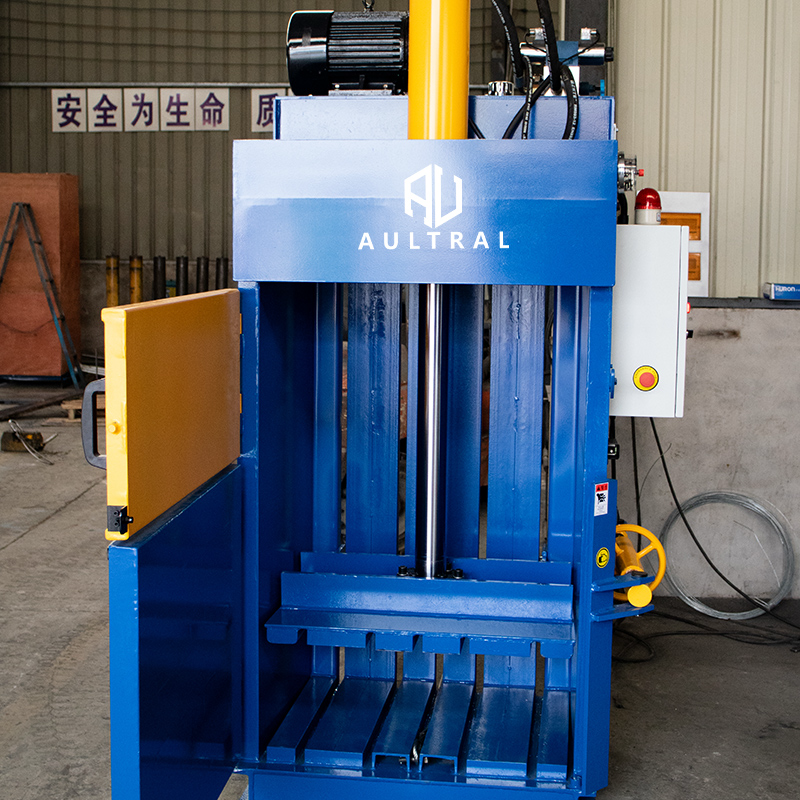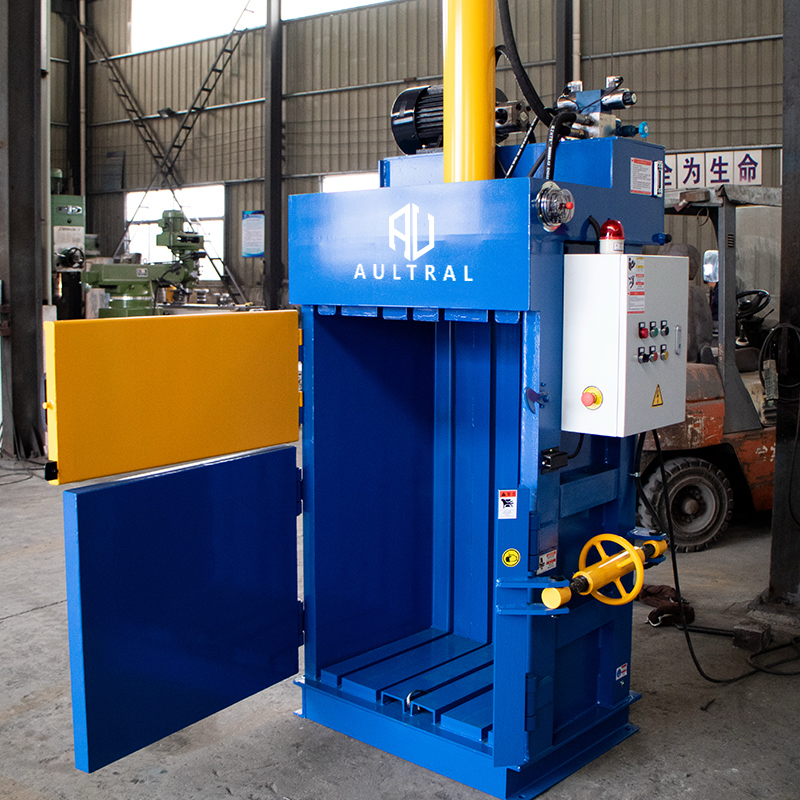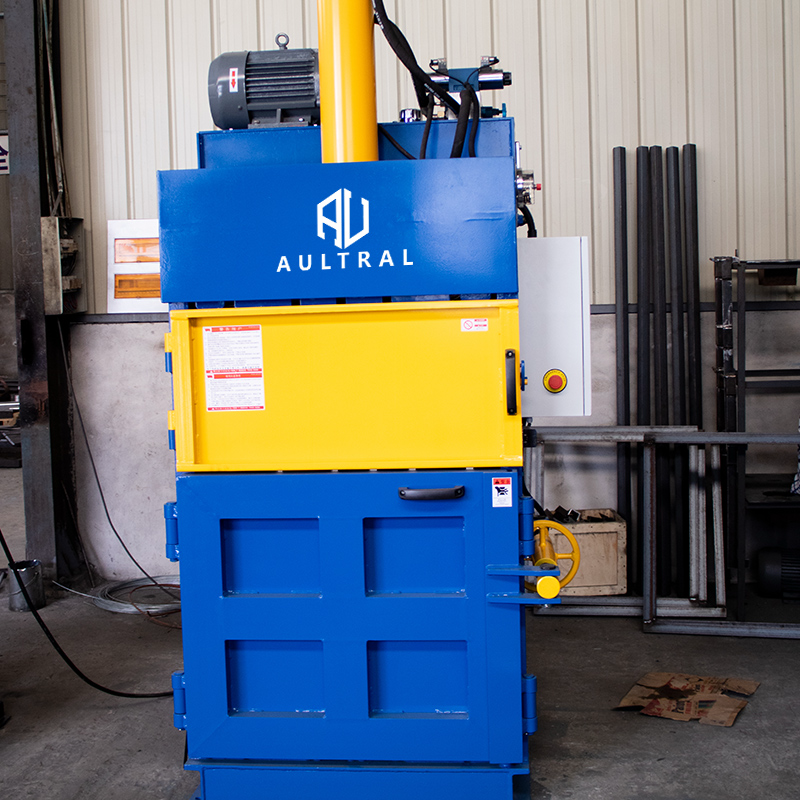What is a vertical non-metal baler?

A vertical non-metal baler is a hydraulic machine designed to compress non-metallic waste materials—such as cardboard, plastic, fabric, cotton, sponge, and other recyclables—into compact, manageable bales. Unlike horizontal balers, vertical balers are space-saving, cost-effective, and ideal for facilities with limited floor space.
The operation is simple: waste materials are placed into the compression chamber from the top, and a hydraulic cylinder applies vertical pressure to form a dense block. The bale is then manually secured with strapping wire or rope and ejected from the chamber.
Vertical non-metal balers are commonly used in recycling centers, warehouses, supermarkets, textile factories, and other industries producing large amounts of soft, bulky waste. By compressing materials, they reduce storage volume, lower transportation costs, and streamline recycling operations.
Models vary in capacity, typically ranging from 10 to 100 tons of hydraulic pressure, and can be customized for bale size, motor power, and application requirements. Some advanced models feature dual cylinders, cross-cylinder designs, automatic chain ejection, or lifting doors, enhancing performance and ease of operation.
With simple controls, minimal maintenance, and high durability, vertical non-metal balers are an essential tool for modern waste management, providing efficiency, practicality, and environmental benefits in a compact package.
Why use a vertical non-metal baler?

Vertical non-metal balers offer practical, economic, and environmental benefits:
-
Reduce Waste Volume – Compressing soft, bulky materials like paper, plastic, fabric, and foam saves storage space and simplifies transportation.
-
Cost-Effective & Space-Saving – Ideal for small to medium facilities with limited floor space or budgets.
-
Easy to Operate – Minimal training and low maintenance requirements reduce operational costs.
-
Improved Workplace Safety & Cleanliness – Keeps waste organized, prevents clutter, and minimizes fire or slip hazards.
-
Compliance & Sustainability – Supports recycling, reduces landfill waste, and helps meet environmental regulations.
-
Revenue Opportunities – Many recyclers pay higher prices for clean, compacted bales than for loose waste.
In short, a vertical non-metal baler is a smart investment for any business aiming to manage recyclable waste efficiently, reduce costs, and support environmental responsibility.
protection.
How to use a vertical non-metal baler?

Operating a vertical non-metal baler is straightforward:
-
Preparation
-
Ensure the machine is connected to power and the hydraulic system is functioning.
-
Check that all safety guards are in place.
-
-
Loading Materials
-
Open the loading door and place cardboard, plastic, textiles, or foam evenly into the compression chamber.
-
Fill the chamber to the recommended level.
-
-
Compression
-
Close the door securely and activate the control panel.
-
The hydraulic cylinder applies vertical pressure to compress the materials into a dense bale.
-
-
Strapping the Bale
-
Open the door and insert baling wires or straps through the provided slots.
-
Tighten straps manually to secure the bale for storage or transport.
-
-
Ejecting the Bale
-
Depending on the model, use a chain or hydraulic ejector to lift the bale out of the chamber.
-
Carefully remove and store the bale in a designated collection area.
-
-
Maintenance & Safety
-
Clean debris, inspect for oil leaks, and check moving parts regularly.
-
Always follow safety guidelines, wear protective gloves, and never bypass safety features.
-
With proper use and regular maintenance, a vertical non-metal baler can deliver years of reliable service, helping businesses reduce waste, save space, and improve recycling efficiency.
In Summary:
Vertical non-metal balers are compact, efficient, and environmentally friendly solutions for handling non-metallic waste. They save space, reduce costs, enhance workplace safety, and support sustainable recycling practices—making them an essential tool for modern waste management.
